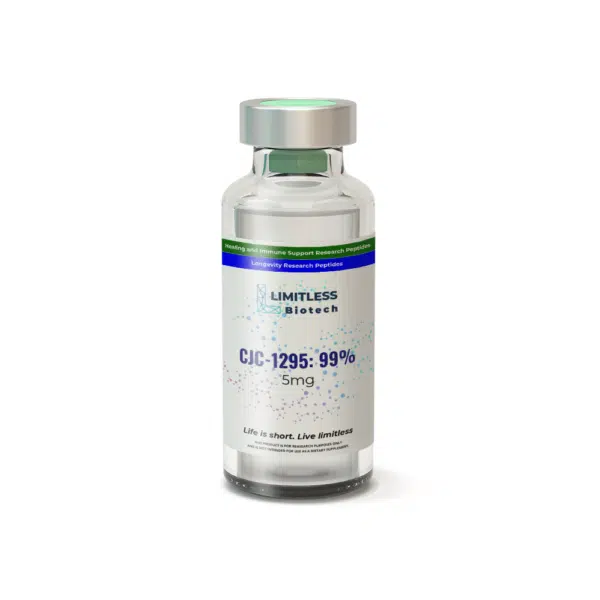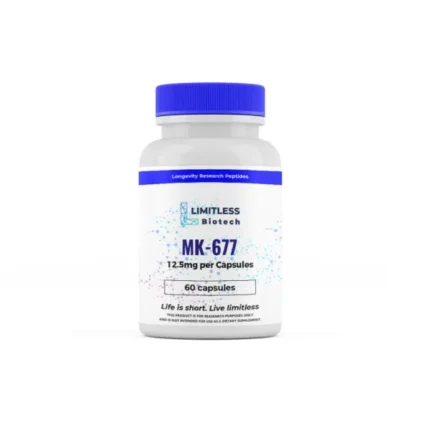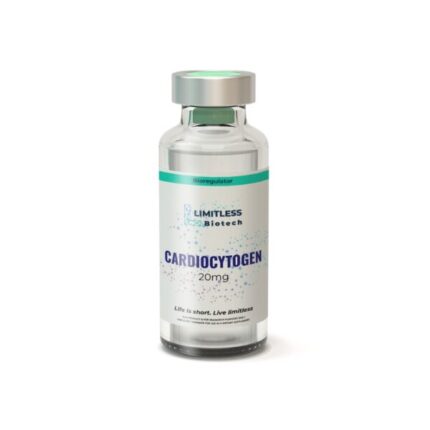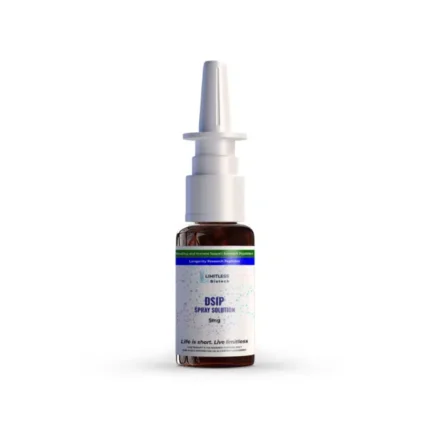Modified GRF 1-29 (CJC-1295 without DAC) is a synthetic analog of growth hormone-releasing factor (GHRF) designed to enhance stability and prolong activity. It is a tetrasubstituted analog of hGRF(1-29) with a maleimidopropionamide group at the C-terminus. This modification enables covalent binding to plasma proteins, particularly serum albumin, which significantly extends half-life and bioactivity compared to unmodified GRF 1-29.
Enhanced Stability
CJC-1295 demonstrates enhanced in vitro stability against enzymatic degradation, particularly by dipeptidylpeptidase-IV, and maintains bioactivity in growth hormone (GH) secretion assays[1].
Growth Hormone Release and IGF-1 Axis Modulation
CJC-1295 demonstrates potent effects on the GH/IGF-1 axis through multiple mechanisms. Research shows increases in mean plasma GH concentrations by 2- to 10-fold for 6 days or more and IGF-1 concentrations by 1.5- to 3-fold for 9-11 days[2]. The peptide specifically increases basal (trough) GH levels by 7.5-fold while preserving natural pulsatile secretion patterns[3].
Importantly, CJC-1295 preserves GH pulsatility while providing sustained elevation. The frequency and magnitude of GH secretory pulses remain unaltered, but the marked enhancement of trough GH levels contributes to overall increased GH secretion and IGF-1 production. This mechanism suggests that continuous GHRH stimulation primarily affects basal GH secretion rather than disrupting normal pulsatile patterns[3].
Growth and Body Composition
Animal studies show effects on growth and body composition parameters. In GHRH knockout mice, CJC-1295 normalized body weight and length, with animals receiving daily treatment exhibiting normal body weight, femur and tibia length, and body composition. The peptide also increased total pituitary RNA and GH mRNA, suggesting somatotroph cell proliferation[4].
Neurological and Cognitive Research
Research into neurological applications of GHRH analogs suggests potential neuroprotective effects. Studies indicate that GHRH analogs may demonstrate anxiolytic and antidepressant-like effects through modulatory effects on monoaminergic signaling, inflammatory and oxidative status[5].
The growth hormone/IGF-1 axis plays important roles in brain function and neuroplasticity. IGF-1 specifically contributes to neuronal survival, synaptic plasticity, and cognitive function[6].
Potential In Vitro Applications
| RESEARCH APPLICATION |
MECHANISM OF ACTION |
RESEARCH MODEL |
| Growth Hormone Secretion Studies |
Investigation of GHRH receptor binding, cAMP signaling cascades, and pituitary somatotroph cell GH release patterns |
Pituitary Cell Cultures |
| IGF-1 Axis Modulation |
Analysis of downstream GH effects on IGF-1 production, IGF-binding protein expression, and growth factor signaling pathways |
Hepatocyte Cultures |
| Protein Stability Research |
Studies on albumin binding kinetics, DPP-IV resistance, and peptide degradation pathways in biological media |
Enzymatic Assays |
| Neuronal Signaling Pathways |
Research on neuroprotective mechanisms, monoaminergic modulation, and growth factor effects on neuronal survival |
Neuronal Cell Cultures |
| Anabolic Signaling Cascades |
Investigation of growth-promoting pathways, protein synthesis regulation, and cellular proliferation mechanisms |
Multi-cell Co-cultures |
Research applications shown are intended as examples for in vitro laboratory use only.
References
- Jetté, L., Léger, R., Thibaudeau, K., Benquet, C., Robitaille, M., Pellerin, I., Paradis, V., Van Wyk, P., Pham, K., & Bridon, D. (2005). Human growth hormone-releasing factor (hGRF)1-29-albumin bioconjugates activate the GRF receptor on the anterior pituitary in rats: identification of CJC-1295 as a long-lasting GRF analog.. Endocrinology, 146 7, 3052-8 . https://doi.org/10.1210/EN.2004-1286.
- Teichman, S., Neale, A., Lawrence, B., Gagnon, C., Castaigne, J., & Frohman, L. (2006). Prolonged stimulation of growth hormone (GH) and insulin-like growth factor I secretion by CJC-1295, a long-acting analog of GH-releasing hormone, in healthy adults.. The Journal of clinical endocrinology and metabolism, 91 3, 799-805 . https://doi.org/10.1210/JC.2005-1536.
- Ionescu, M., & Frohman, L. (2006). Pulsatile secretion of growth hormone (GH) persists during continuous stimulation by CJC-1295, a long-acting GH-releasing hormone analog.. The Journal of clinical endocrinology and metabolism, 91 12, 4792-7 . https://doi.org/10.1210/JC.2006-1702.
- Alba, M., Fintini, D., Sagazio, A., Lawrence, B., Castaigne, J., Frohman, L., & Salvatori, R. (2006). Once-daily administration of CJC-1295, a long-acting growth hormone-releasing hormone (GHRH) analog, normalizes growth in the GHRH knockout mouse.. American journal of physiology. Endocrinology and metabolism, 291 6, E1290-4 . https://doi.org/10.1152/AJPENDO.00201.2006.
- Recinella, L., Chiavaroli, A., Orlando, G., Ferrante, C., Marconi, G. D., Gesmundo, I., Granata, R., Cai, R., Sha, W., Schally, A. V., Brunetti, L., & Leone, S. (2020). Antinflammatory, antioxidant, and behavioral effects induced by administration of growth hormone-releasing hormone analogs in mice. Scientific reports, 10(1), 732. https://doi.org/10.1038/s41598-019-57292-z.
- Sonntag, W. E., Deak, F., Ashpole, N., Toth, P., Csiszar, A., Freeman, W., & Ungvari, Z. (2013). Insulin-like growth factor-1 in CNS and cerebrovascular aging. Frontiers in aging neuroscience, 5, 27. https://doi.org/10.3389/fnagi.2013.00027.






















Reviews
There are no reviews yet.